Freestanding Freezer: Why is my freezer too warm?
If your freezer isn't cooling well and doesn't have an automatic defrost system, check for frost buildup inside the freezer. Manually defrosting the inside of the freezer regularly allows the refrigerant to cool the compartment properly so the temperature reaches 0 degrees.
If you hear rattling, knocking or loud whining noises from the compressor, you may need to replace the compressor. A faulty compressor won't compress the refrigerant in order to cool the freezer properly. A service technician will need to replace the compressor because that repair requires recovery and recharge of the refrigerant.
A failed cold control thermostat can also prevent the freezer from cooling properly. The cold control thermostat senses freezer temperature and turns on the compressor to keep the freezer compartment cold. If the cold control sensor fails or the internal contact inside the cold control isn't sending current to run the compressor, the freezer won't cool. If the compressor runs but doesn't stay on long enough to keep the freezer compartment at 0 degrees, you may need to replace the cold control thermostat.
For freezers with an automatic defrost system, a broken defrost heating element or failed defrost bi-metal thermostat can prevent the defrost system from melting frost off the evaporator. You'll typically see frost on the evaporator cover when the defrost system isn't working because the defrost heater isn't turning on to melt frost off the evaporator fins. The evaporator won't be able to cool the freezer well when the evaporator cooling fins are caked with frost because the frost blocks air passages over the fins.
A failed evaporator fan motor can also prevent the freezer from cooling well because cooling air won't circulate through the freezer compartment. If you don't hear the evaporator fan running inside the freezer when the compressor runs, you may need to replace the evaporator fan.
Some freezers use a condenser fan to cool down refrigerant before it enters the evaporator. A failed condenser fan motor can inhibit freezer cooling because air doesn't move across the condenser coils to cool the refrigerant before the refrigerant enters the evaporator. Also, check the condenser coils to see if the coils are dirty-dust on the coils can prevent air from cooling the refrigerant. Clean the condenser coils if dirty.
A failed electronic control board or a bad thermistor (also known as the temperature sensor) can also cause your freezer to warm up. If the thermistor doesn't sense that the freezer is warm, the electronic control board won't turn on the compressor. A faulty relay on the electronic control board can also prevent the control board from sending power to the compressor.

THESE REPAIRS MAY HELP SOLVE YOUR FREESTANDING FREEZER PROBLEM

Replace the freezer defrost heating element
The defrost heating element melts frost from the evaporator fins to improve cooling. If the defrost heating element fails, excessive frost covers the evaporator fins. Replace the defrost heating element if it's damaged or not heating.
Freezer defrost heating element
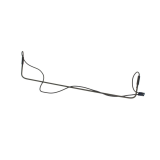
How to replace a freezer defrost heater
When a freezer isn't cold and has a frosty buildup on the evaporator fins, it could mean the defrost heater is broken. This step-by-step repair guide and video show how to replace a freezer defrost heater.

Replace the freezer defrost bi-metal
The freezer defrost sensor-also known as the defrost bi-metal or defrost termination thermostat-is next to the evaporator. It trips when the evaporator temperature gets too high, to protect the evaporator from overheating. When it trips, the defrost bi-metal shuts off the defrost heater. A defective defrost bi-metal prevents the defrost heater from working, causing frost to build up on the evaporator, causing a warmer freezer interior. Replace the defrost sensor if it prevents the defrost heater from working.
Freezer defrost bi-metal
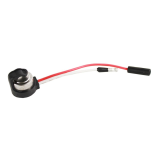
How to replace a freezer defrost thermostat
If your upright freezer isn't cooling and its interior back wall is covered with frost, the defrost thermostat could be the problem. This repair guide and video show how to replace a freezer defrost thermostat with step-by-step instructions.

Replace the freezer thermistor
The thermistor is a temperature sensor inside the freezer. The electronic control board uses the reading from the thermistor to cycle the compressor on and off to maintain freezer temperature. Replace the thermistor if it's not sensing freezer temperature accurately.
Freezer thermistor
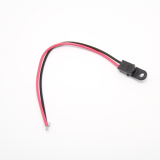
How to replace a freezer thermistor
If your freezer is too cold or not cold enough, the thermistor might be to blame. This easy-to-follow repair guide and video show how to replace a freezer thermistor.
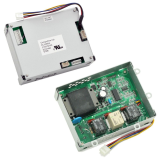
Replace the freezer electronic control board
The electronic control board-also called the main control board or the power control board (PCB)-manages the compressor and the defrost cycle. The control board activates the compressor to keep the freezer cold and runs the fans. The electronic control board monitors temperature sensors to control freezer temperature and the defrost cycle. Replace the electronic control board if it's not working properly.
Freezer electronic control board
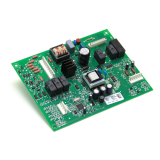
How to replace a freezer electronic control board
If your freezer isn't cold and you don't hear the fans or compressor running, the electronic control board could be the problem. This step-by-step repair guide and video show how to replace a freezer electronic control board.

Replace the freezer cold control thermostat
The cold control thermostat, located in the control housing, regulates the freezer temperature by cycling the compressor on and off. The sensor bulb on the cold control thermostat monitors freezer temperature. Replace the cold control thermostat if it doesn't cycle the compressor properly to maintain freezer temperature.
Freezer cold control thermostat
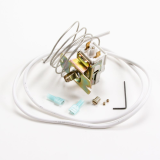
How to replace a freezer temperature control thermostat
If your freezer isn't freezing, the temperature control thermostat could be to blame. This step-by-step repair guide shows how to replace a chest freezer thermostat in less than 30 minutes.

Replace the freezer evaporator fan
The evaporator fan mounts on the evaporator assembly. It moves air across the evaporator fins and through the cabinet for cooling. The freezer won't cool properly when the evaporator fan breaks. If the evaporator fan doesn't run when activated, replace it.
Freezer evaporator fan

How to replace a freezer evaporator fan
If your freezer is warm and you don't hear the hum of a fan, the evaporator fan could be broken. This DIY repair guide and video show how to replace a freezer evaporator fan in 6 steps.
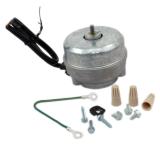
Replace the freezer condenser fan motor
The condenser fan is in the machine compartment of the freezer next to the compressor. It moves air across the condenser coils to help cool the hot refrigerant coming out of the compressor. Replace the condenser fan if it fails to run when activated.
Freezer condenser fan motor
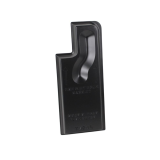
Perform freezer routine maintenance
Routine maintenance keeps your freezer working efficiently. Clean the bottom front grill and the condenser coils regularly to help the freezer cool better and use less energy. Adjust the freezer door if it's not sealing properly. Lubricate the door seal with a light coat of petroleum jelly occasionally to prevent air leaks into the freezer.
Perform freezer routine maintenance
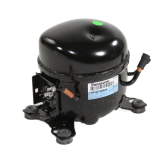
Replace the freezer compressor
The compressor is a pump that an electric motor rotates. The compressor is the problem if the motor won't start when the start relay actives it, or if the motor runs but the pump doesn't compress the refrigerant. Have a service technician replace the compressor, because this repair requires access to the sealed refrigerant system.
Freezer compressor

Clean the refrigerator condenser coils
Dust-covered refrigerator coils can prevent the refrigerator and freezer from running efficiently and cooling properly. Follow the instructions in your owner's manual for cleaning the condenser coils. Unplug the refrigerator before accessing and cleaning the coils. On most refrigerators, the coils are behind the bottom front grill. Clean the condenser coils with a coil brush.
Clean the refrigerator condenser coils
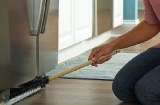
How to clean refrigerator condenser coils
Does the ice cream in your freezer seem too soft or the beverages in your refrigerator not cold enough? It could be the condenser coils need to be cleaned. This DIY repair guide shows how to clean the refrigerator condenser coils in 4 easy steps.
Most common symptoms to help you fix your freestanding freezers
Choose a symptom to see related freezer repairs.
Main causes: burned out light bulb, bad door or lid switch, faulty LED light board, wiring failure, control system failu…
Main causes: lack of power, bad compressor, refrigerant leak, bad thermistor, defrost system failure, dirty condenser co…
Main causes: compressor failure, no refrigerant, faulty sensor, control failure, broken defrost heater, bad defrost bi-m…
Main causes: damaged door or lid gasket, cracked cabinet liner, bad defrost bi-metal thermostat, broken defrost heater, …
Main causes: excessive frost, bad defrost heater, bad defrost bi-metal, control system failure, low refrigerant charge, …
Main causes: dirty condenser coils, condenser fan failure, dirty bottom front grill, leaky door or lid gasket…
Main causes: lack of power, control system failure, broken compressor start relay, locked up compressor, compressor moto…
Main causes: leaky door or lid gasket, broken defrost heater, bad defrost bi-metal thermostat, defrost control failure, …
Most common repair guides to help fix your freestanding freezers
Effective articles & videos to help repair your freestanding freezers
Use the advice and tips in these articles and videos to get the most out of your freezer.

Learn about all the convenient features on our Sears PartsDirect website that make your parts purchases easier.…

Get answers to frequently asked questions about Sears and Sears PartsDirect.…
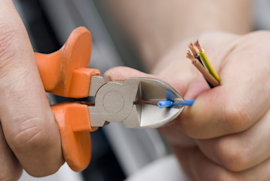
Learn how to repair broken, frayed or damaged wires in your appliances.…
